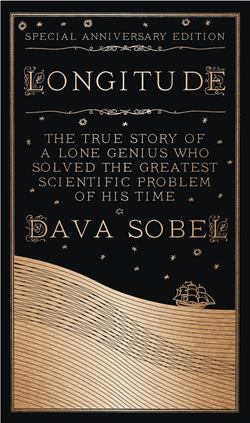Читать книгу Longitude - Дава Собел - Страница 10
5. Powder of Sympathy
ОглавлениеThe College will the whole world measure;
Which most impossible conclude,
And Navigation make a pleasure
By finding out the Longitude.
Every Tarpaulin shall then with ease
Sayle any ship to the Antipodes.
—ANONYMOUS (ABOUT 1660) “Ballad of Gresham College”
At the end of the seventeenth century, even as members of learned societies debated the means to a longitude solution, countless cranks and opportunists published pamphlets to promulgate their own hare-brained schemes for finding longitude at sea.
Surely the most colorful of the offbeat approaches was the wounded dog theory, put forth in 1687. It was predicated on a quack cure called powder of sympathy. This miraculous powder, discovered in southern France by the dashing Sir Kenelm Digby, could purportedly heal at a distance. All one had to do to unleash its magic was to apply it to an article from the ailing person. A bit of bandage from a wound, for example, when sprinkled with powder of sympathy, would hasten the closing of that wound. Unfortunately, the cure was not painless, and Sir Kenelm was rumored to have made his patients jump by powdering—for medicinal purposes—the knives that had cut them, or by dipping their dressings into a solution of the powder.
The daft idea to apply Digby’s powder to the longitude problem follows naturally enough to the prepared mind: Send aboard a wounded dog as a ship sets sail. Leave ashore a trusted individual to dip the dog’s bandage into the sympathy solution every day at noon. The dog would perforce yelp in reaction, and thereby provide the captain a time cue. The dog’s cry would mean, “the Sun is upon the Meridian in London.” The captain could then compare that hour to the local time on ship and figure the longitude accordingly. One had to hope, of course, that the powder really held the power to be felt many thousand leagues over the sea, and yet—and this is very important—fail to heal the telltale wound over the course of several months. (Some historians suggest that the dog might have had to be injured more than once on a major voyage.)
Whether this longitude solution was intended as science or satire, the author points out that submitting “a Dog to the misery of having always a Wound about him” is no more macabre or mercenary than expecting a seaman to put out his own eye for the purposes of navigation. “[B]efore the Back-Quadrants were Invented,” the pamphlet states, “when the Forestaff was most in use, there was not one Old Master of a Ship amongst Twenty, but what a Blind in one Eye by daily staring in the Sun to find his Way.” This was true enough. When English navigator and explorer John Davis introduced the backstaff in 1595, sailors immediately hailed it as a great improvement over the old cross-staff, or Jacob’s staff. The original sighting sticks had required them to measure the height of the sun above the horizon by looking directly into its glare, with only scant eye protection afforded by the darkened bits of glass on the instruments’ sighting holes. A few years of such observations were enough to destroy anyone’s eyesight. Yet the observations had to be made. And after all those early navigators lost at least half their vision finding the latitude, who would wince at wounding a few wretched dogs in the quest for longitude?
